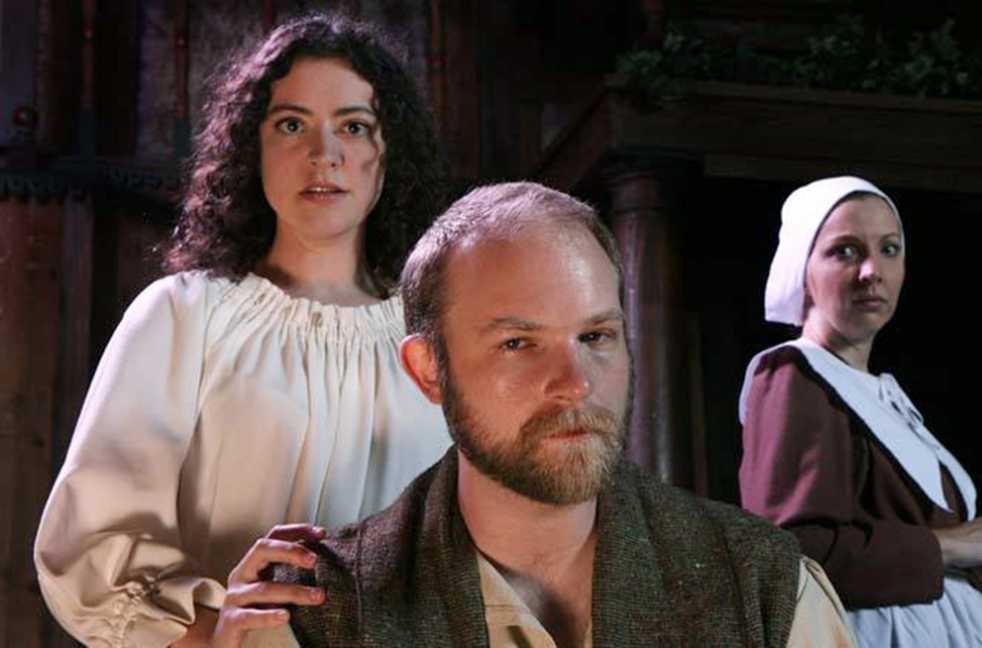The New American Shakespeare Tavern is a proponent of original practice, touting its disregard for the fourth wall during performances as one of its main draws. Starting on Oct. 10, the playhouse set their customary Shakespearean repertoire aside in favor of a mid-twentieth century play “The Crucible,” by Arthur Miller.
With the play having been written well after the establishment of the fourth wall, the tavern’s original practice would have created a naming paradox. To avoid any issues, the “The Crucible” was performed while fully ignoring the audience, despite their usual interactions.
“The Crucible” is set in late seventeenth century Salem, Mass., and features the witch trials that took place there. The play opens with a bit of backstory through dialogue among the characters. Many of the young girls in Salem had been dancing in the woods with the slave Tituba (Tetrianna Silas) when one of their number, Betty (Hayley Platt), fell into a coma, which in the 1600s was usually a malady attributed to the supernatural.
Platt should be commended for being able to remain still while the rest of the ensemble acted out their numerous scenes with Betty lying comatose, predominantly displayed on her bed. One has to wonder if Miller was even considering the actors when he wrote this part of the play.
From here, the excitable villagers quickly cried witchcraft and believed the girls, led by Abigail (Rachel Frawley), whenever they pointed to a new person and claimed him or her to be a witch. The play showed all of this mayhem through the plight of John and Elizabeth Proctor (Matt Nitchie and Mary Russell, respectively), who were, in turn, accused of witchcraft.
The play delved into the age-old question of which is more important: one’s honor or one’s life. Elizabeth Proctor clearly wished her husband to keep his honor, though she ultimately attempted to let him decide his own fate. Reverend Hale (Paul Hester), on the other hand, pleaded with John Proctor to save his own life by confessing to witchcraft that both knew he had not performed. Nitchie did a great job of portraying the anguish of deciding and seemed immersed in his role, mostly succeeding in dragging the audience with him.
Perhaps one of the most enjoyable moments of this rendition of “The Crucible” was during a court scene. The court is assembled, a clerk is transcribing all that happens, and the accusing girls are being questioned about a potential witch. When the children are brought close to the accused, they all begin screaming and generally creating a scene.
At this point, Vinnie Mascola, who plays the court clerk Cheever, just looks at the howling children; baffled, he puts down his quill, acknowledging that there is no way to properly report these proceedings. As soon as another character begins speaking again, Mascola resumes transcribing the court session with a reassured and comforted look on his face, seeming to be thankful that he can once again perform his duty.
While its subject matter is ridiculous by today’s scientific standards, Shakespeare Tavern’s actors managed to bring Arthur Miller’s play to life on their stage. Even with the hysteria-driven plot, Frawley’s and Nitchie’s portrayal of the Proctors showed that the characters were still capable of individual thought, a point left out of many stories.
“The Crucible” will continue to be performed until Nov. 1, when the Shakespeare Tavern will again return to the works of Shakespeare for the remainder of November with their rendition of “The Tempest.”
